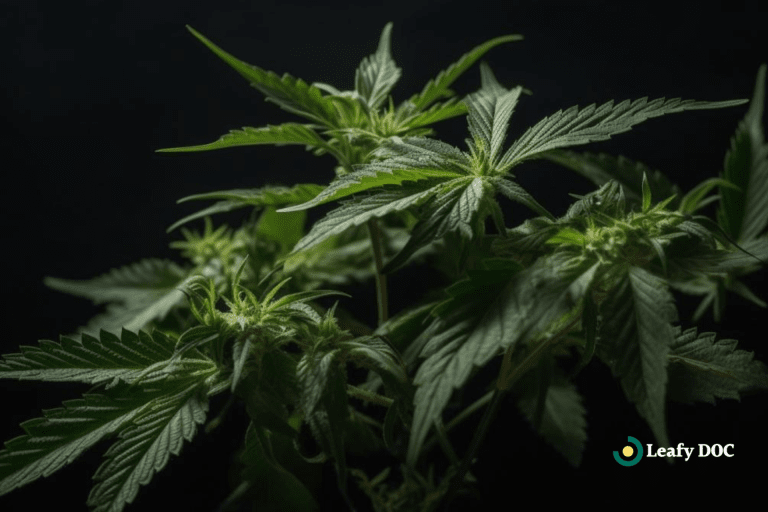Age-related Macular Degeneration
Can medical marijuana help patients who suffer from age-related macular degeneration symptoms? Read below to find out more.
What is Age-related Macular Degeneration?
Age-related macular degeneration (AMD) is an eye disorder that affects central vision. AMD patients cannot see people or things directly in front of them. This age-related eye issue often occurs in people over age 50. The disease affects the macula, the back part of the retina. People with AMD can still use their peripheral vision. Over ten million people in the U.S. have macular degeneration. It’s the leading cause of vision loss.
Who gets AMD?
Age-related macular degeneration is more likely to occur with older age. Other risk factors may include the following:
- Family history of the disease
- Obesity
- Smoking
- High blood pressure
- Consuming high saturated fats
- European descent
Types and Stages of AMD
There are two types of Age-related macular degeneration:
- Dry (atrophic): Up to ninety percent of patients with macular degeneration have a dry form.
- Wet (exudative): This condition is less common and occurs when abnormal blood vessels develop under the eye.
AMD occurs in three stages, with little to no symptoms occurring until the late stage.
- Early
- Intermediate
- Late (advanced)
What are the symptoms?
Age-related macular degeneration doesn’t typically produce symptoms until the disease progresses. You may experience the following symptoms:
- Blurred vision.
- Blank or dark spots in the vision field
- Waves or curves in the vision field
Diagnosis & Treatment
Annual eye exams are vital to detecting the disease and starting treatments. During an examination, your doctor checks for changes to the retina and macula. You may receive one of these tests:
- Dilated eye exam
- Fluorescein angiography
- Optical coherence tomography
- Optical coherence tomography angiography
- Visual field test
There is no cure for AMD. Starting treatments early can slow progression and reduce symptom severity. Depending on the disease type and stage, treatments may include:
- Anti-vascular endothelial growth factor
- Nutritional supplements
- Photodynamic therapy
Can medical cannabis help?
While there isn’t currently direct research on cannabis and AMD, there is significant evidence that THC and CBD can help with eye pressure, blood pressure, anxiety, depression, chronic pain, and inflammation.
A person’s blood pressure directly affects if they will experience red eyes after using THC. For example, those with naturally high blood pressure need to ingest increased levels of THC to lower their blood pressure enough to cause bloodshot eyes. However, people with marijuana or smoking allergies can experience red eyes as a secondary symptom regardless of THC concentrations.
After consuming a cannabis-infused product, users typically experience increased blood pressure and heart rate due to the cannabinoids. These rises are similar to normal, moderate physical activities like exercise or sex. It generally takes up to ten minutes for heart rates to return to normal and blood pressure to decrease. Blood vessels, veins, and ocular capillaries dilate as the blood pressure drops. The dilation of ocular blood vessels and capillaries causes increased blood flow to the eyes, which causes the eyes to turn red and reduces intraocular stress.
This release can be beneficial in relieving eye pressure that can result in nerve damage and vision loss for glaucoma patients. Scientific evidence that THC can lower intraocular pressure (IOP) is a primary reason why many glaucoma patients have attempted medical marijuana use to treat symptoms.
Medical marijuana is commonly found to possess significant anti-inflammatory and antioxidant properties, which can help with chronic pain management reasonably quickly. Cannabinoid receptors bind to the brain and peripheral nerve cells and help regulate how you see and feel the pain to reduce symptoms. Medical cannabis, therefore, as opposed to other drugs, appears to be an excellent alternative to treat and manage pain due to inflammation.
Recent studies from medicine and health sciences professionals suggest that certain cannabis products may effectively treat an overactive immune system. It can connect with the cannabinoid receptors of the body to combat the proinflammatory t-cell responses needed. It has been used to treat rare skin conditions, Crohn’s disease, neuropathic pain, particularly autoimmune disease, inflammatory bowel disease, acute psychosocial stress, and many other conditions.
Last Updated: June 14, 2024
Get Your Medical Card
Connect with a licensed physician online in minutes
Table of Contents
Keep Reading
-
Decarbing Your Cannabis 101
Unlock the full potential of your cannabis! Learn the basics of decarbing, what it means, and how to do it right with our Decarbing Your Cannabis 101 guide.
-
Enhance Your Exercise Routine With Cannabis
Unleash the power of cannabis in your exercise routine to enhance performance and recovery. Elevate your workouts with this ultimate guide on using cannabis for exercise. Take your fitness journey to the next level today!
-
Best Cannabis Strains For Mindful Meditation
Unlock deep mindfulness during meditation with the best cannabis strains for ultimate focus and relaxation. Elevate your practice today! Find out more about these strains here.



